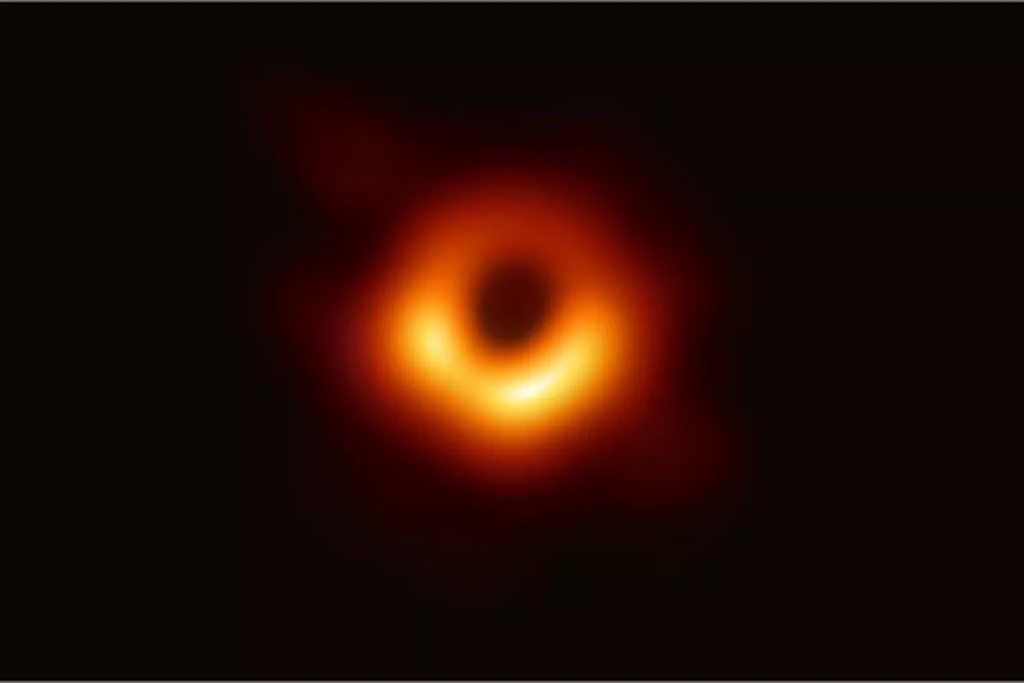A black hole is alleged to be the invisible object at the center of a distant star’s orbit. The mainstream theory is that a star is orbiting an invisible object that has lots of mass. It is the enormous amount of mass of the invisible object that compels the star to circle this unseen celestial object.
A black hole is said to come into being when an enormous star collapses on itself gravitationally towards the end of its useful life. Imagine a star that has several times the matter content of our Sun. It gradually squeezes all the hydrogen and helium gas until there is no more fuel. Gravitation gradually compresses these gases into solid, heavier matter such as silicon and iron. The star is no longer encapsulated in a gaseous foam, but now is entirely made of solid matter. If the star started out with several times the matter our Sun has, the gravitational attraction towards its center exceeds the capacity of matter to withstand such pressures. Matter is literally crushed out of existence…
“The matter that forms a black hole is crushed out of existence. Just as the Cheshire Cat disappeared and left only its smile behind, a black hole represents matter that leaves only its gravity behind.”
“…the gravitational attraction is so intense the neutrons are literally crushed out of existence. We call the object a “black hole.”
What remains is a mathematical concept called mass. A black hole is entirely made of mass. This is what the equations tell the mathematicians and this is their conclusion regarding what is happening out there in the cosmos.
The black hole is described as a zero-dimensional object. However, the theorist always illustrates a three dimensional whirlwind projected onto a two-dimensional platform. Somehow, the theorists find it difficult to illustrate a zero-dimensional ‘entity’.

“rational mechanism for how a black hole achieves such miraculous movement of a distant star without an intervening medium.”
The mechanism is gravity, just like any other mass.
“The black hole is described as a zero-dimensional object. However, the theorist always illustrates a three dimensional whirlwind projected onto a two-dimensional platform. Somehow, the theorists find it difficult to illustrate a zero-dimensional ‘entity’.
”
You’ve been mixing up the singularity and the event horizon.
Really you need to do some more reading.
https://jila.colorado.edu/~ajsh/insidebh/intro.html
‘Gravity’ is not a mechanism. You’ll learn that when you get to high school. It is the mechanism of ‘gravity’ that we’re trying to explain.
And yes, the event horizon is an abstract CONCEPT that somehow morphs into a physical container that encapsulates a zero-dimensional non-entity known as a singularity. So far we have NOTHING! So far we have a NOTHING encapsulating another NOTHING: all zero D!
We don’t care to know what ‘happens’ inside a 0D non-entity the mathemagicians call ‘black hole’, ‘event’ horizon’, or ‘singularity’. We wanna know WHAT a black hole IS ! The mathemagicians haven’t got past that Q yet.